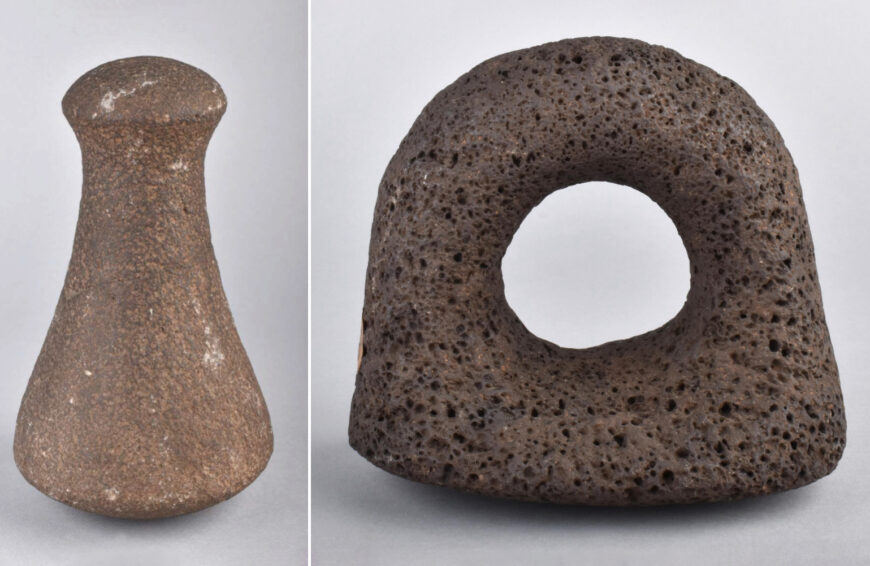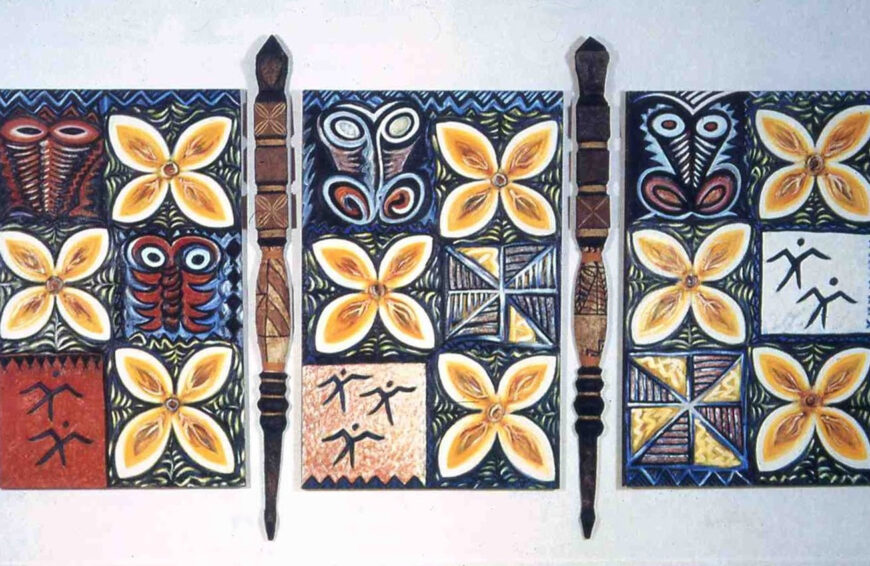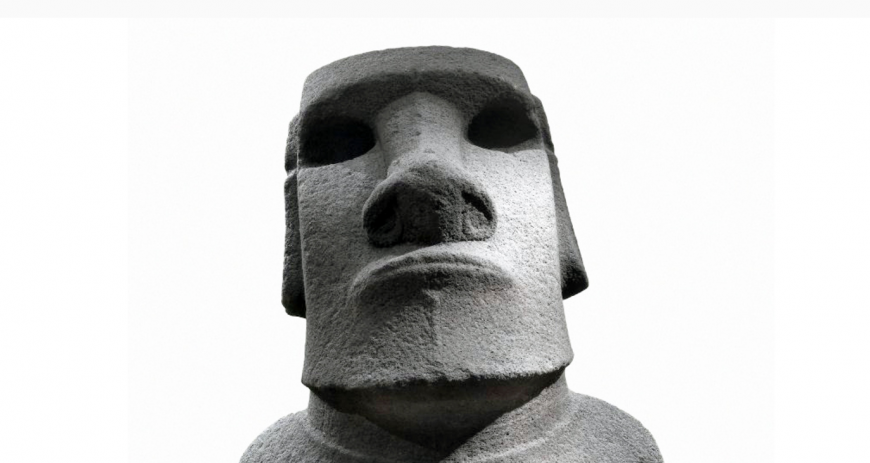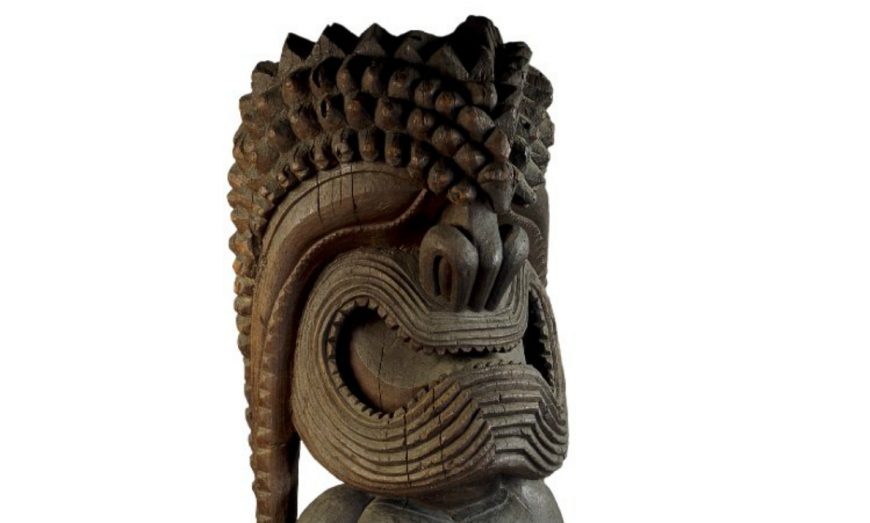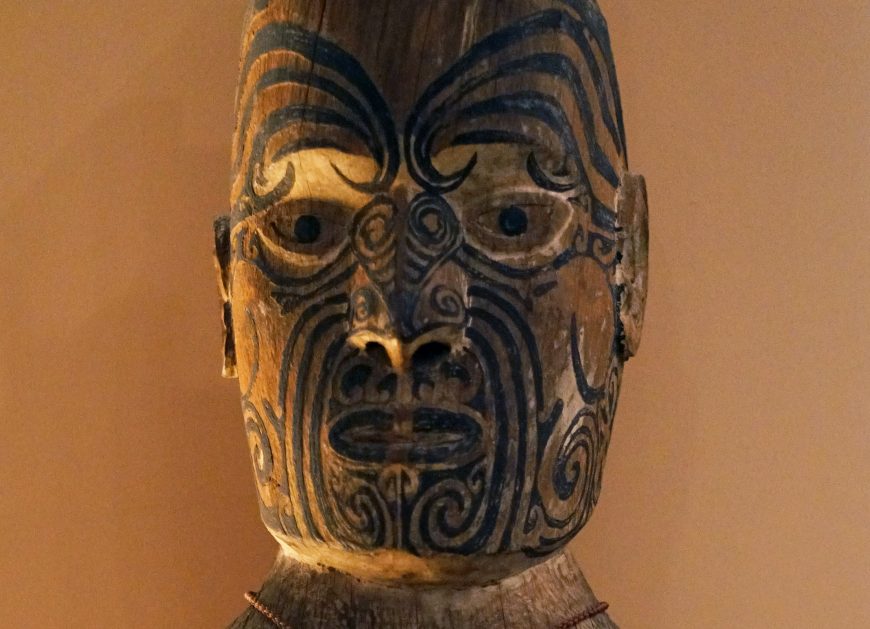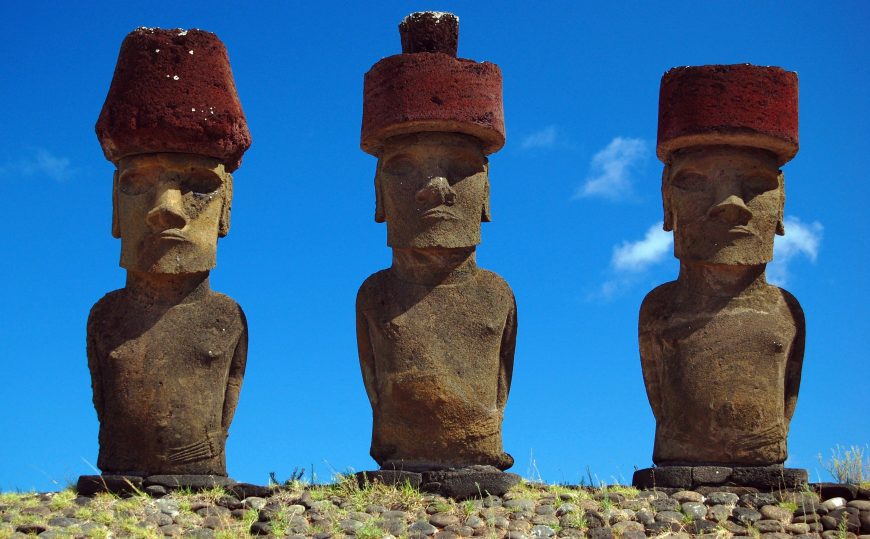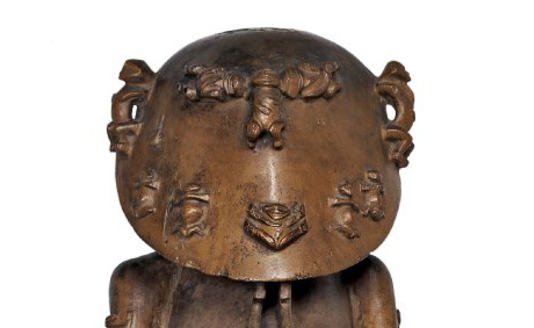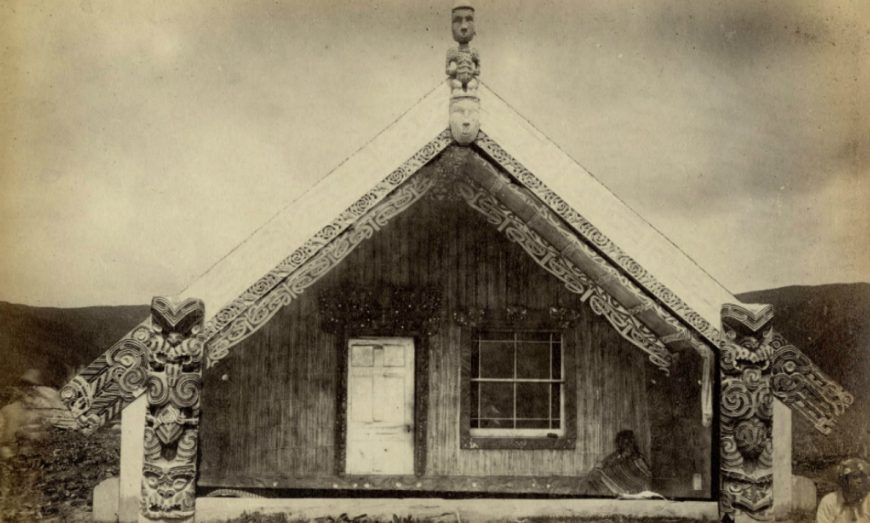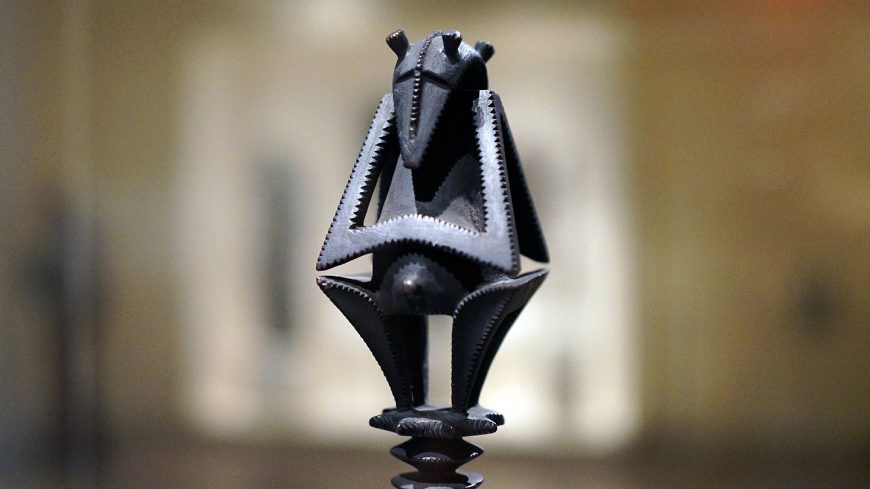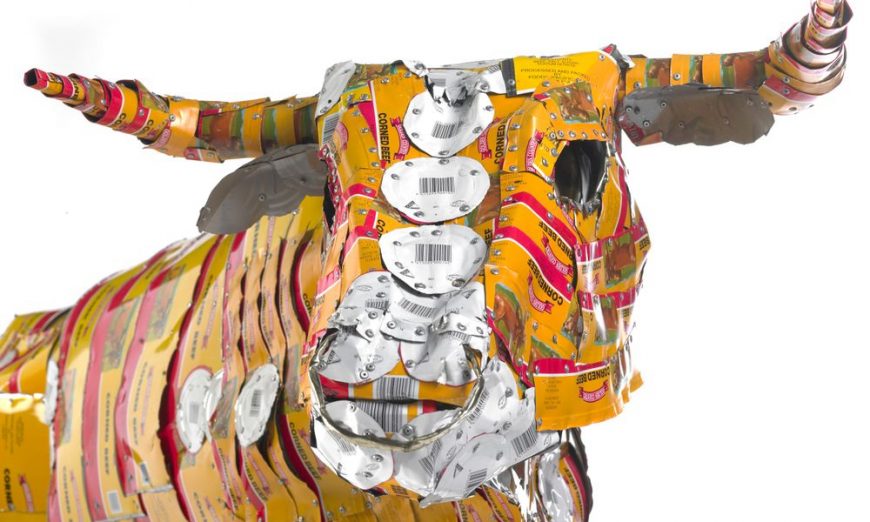
Staff-god in its barkcloth wrapping, late 18th–early 19th century, wood, paper mulberry bark, feather, 396 cm, Rarotonga, Cook Islands (© Trustees of the British Museum)
The Cook Islands are situated in the middle of the South Pacific. The wood carvers of the island of Rarotonga, one of the Cook Islands, have a distinctive style. The Cook Islands were settled around the period 800–1000 C.E. Captain Cook made the first official European sighting of the islands in 1773, but spent little time in the area during his voyages. In 1821 the London Missionary Society set up a mission station on the island of Aitutaki, followed by one on Rarotonga in 1827. The Cook Islands became a British Protectorate in 1888, and were annexed in 1901. Since then they have been administered by New Zealand.

Detail, Staff-god, late 18th–early 19th century, wood, paper mulberry bark, feather, 396 cm long, Rarotonga, Cook Islands (© Trustees of the British Museum)
Representations of the deities worshipped by Cook Islanders before their conversion to Christianity included wooden images in human form, slab carvings and staffs such as this, known as “god sticks.” They varied in size from about 73 cm to nearly four metres, like this rare example. It is made of ironwood wrapped with lengths of barkcloth.
The upper part of the staff consists of a carved head above smaller carved figures. The lower end is a carved phallus. Some missionaries removed and destroyed phalluses from carvings, considering them obscene. Reverend John Williams observed of this image that the barkcloth contained red feathers and pieces of pearl shell, known as the manava or spirit of the god. He also recorded seeing the islanders carrying the image upright on a litter. This image was among fourteen presented to Reverend John Williams at Rarotonga in May 1827.
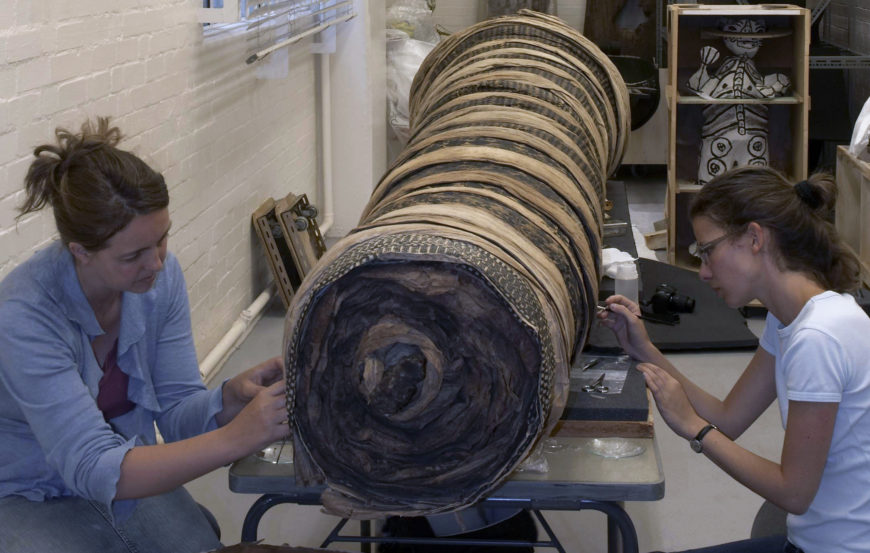
Conservators working on the barkcloth wrapping. Staff-god, late 18th–early 19th century, wood, paper mulberry bark, feather, 396 cm, Rarotonga, Cook Islands (© Trustees of the British Museum)
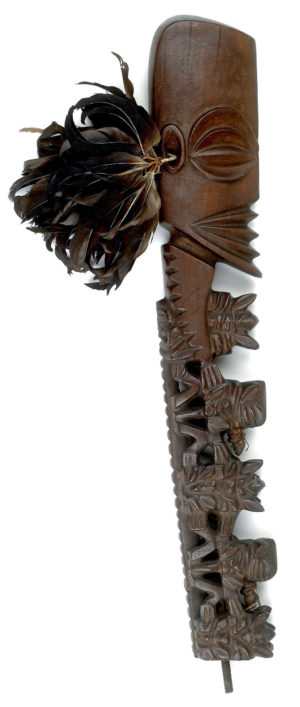
Detail, Staff-god, late 18th–early 19th century, wood, paper mulberry bark, feather, 396 cm long, Rarotonga, Cook Islands (© Trustees of the British Museum)
The only surviving wrapped example of a large staff god, this impressive image is composed of a central wood shaft wrapped in an enormous roll of decorated barkcloth. There are no other surviving large staff-gods from the Cook Islands that retain their barkcloth wrapping as this one does. This was probably one of the most sacred of Rarotonga’s objects.
The shaft is in the form of an elongated body, with a head and small figures at one end. The other end, composed of small figures and a naturalistic penis, is missing. A feathered pendant is bound in one ear.
Little is known of the function or identity of these images. The ethnologist Roger Duff speculated that they represent Tangaroa the creator god, but without evidence. What is clear is that in their materials they combine the results of the skilled labor of men and women. They also have an explicit sexual aspect, thus embodying male and female productive and reproductive qualities. [1]
Male and female elements
This staff god is a potent combination of male and female elements. The wooden core, made by male carvers, has a large head at one end and originally terminated in a phallus. Smaller figures in profile appear to be prominently male.
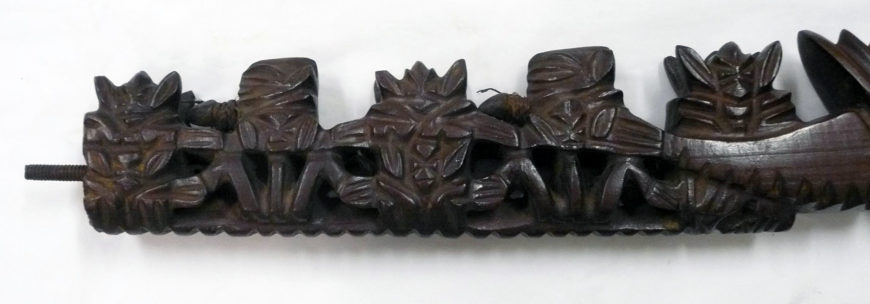
Detail, Staff-god, late 18th–early 19th century, wood, paper mulberry bark, feather, 396 cm long, Rarotonga, Cook Islands (© Trustees of the British Museum)
Jean Tekura Mason, curator of the Cook Islands Library and Museum Society suggests that the other figures facing outwards could depict women in childbirth. The barkcloth, made by women, not only protects the ancestral power (‘mana) of the deity, but contains it within the different layers.
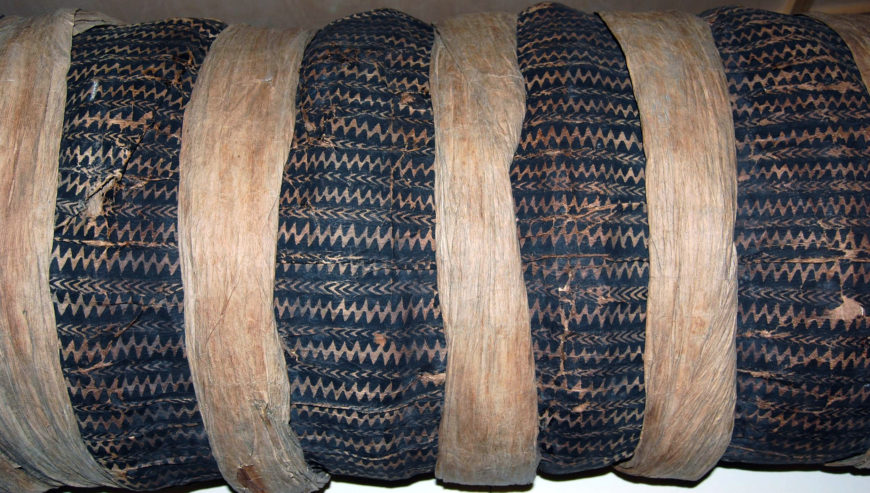
Detail, Staff-god, late 18th–early 19th century, wood, paper mulberry bark, feather, 396 cm long, Rarotonga, Cook Islands (© Trustees of the British Museum)


